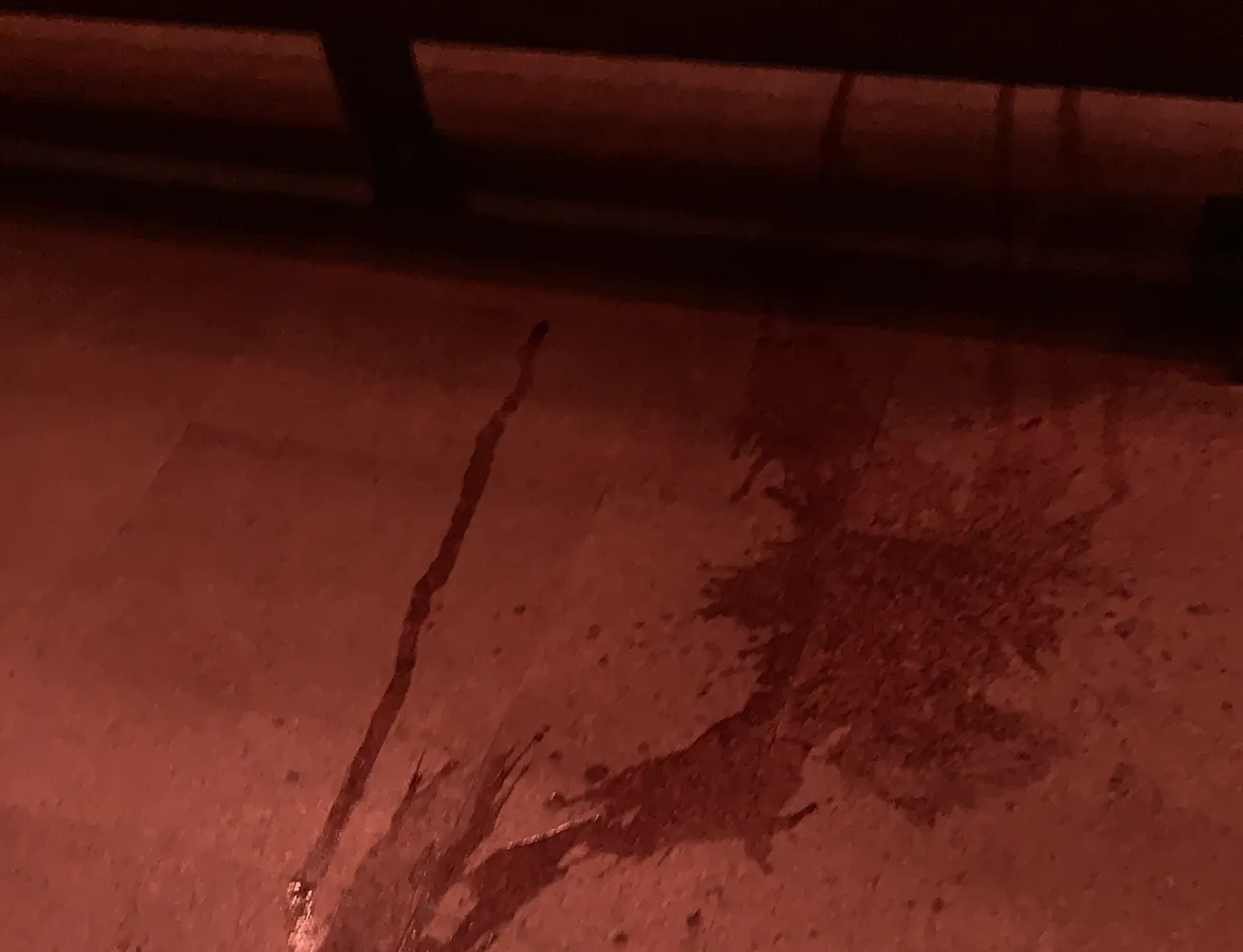Table of Contents
Photo: Memorial Church after wine was dumped on the floor, November 1, 2022
After two notes were left on a Dia de los Muertos display calling it idolatry, Stanford strongly condemned the incident, stating “any form of religious bias that shows intolerance to certain rituals and practices of others is unacceptable.” These words ring hollow, however, when examining the University’s response (or lack thereof) to two attacks on the practice of the Catholic faith at Stanford last month.
On November 1st, 2022, All Saints’ Day, Mass was celebrated in Memorial Church at 8 pm and Adoration (honoring the sacramental Eucharist) followed at 9 pm. After Mass, a group of students gathered outside before Adoration began. After most — myself included — had gone inside, an onlooker reported that “a group of people who were seemingly tourists […] briefly came into the church and [committed] vandalism by spilling wine on the floor at the back of the church.” Wine, of course, plays a critical part in the worship of Catholics (and most Christians) due to its role in the celebration of the Eucharist. Yet, Stanford apparently does not recognize the sacramental significance of wine for millions of Christians worldwide.
I reached out to Deans for Religious & Spiritual Life Tiffany Steinwert, Colleen Preuninger, and Sakena Young-Scaggs to ask if they could direct me to any statements made by the University or the Office of Religious and Spiritual Life (ORSL) about the incident. After nearly 3 weeks, Dean Steinwert replied, “upon further investigation, it was determined to have been an accidental spill from an unknown guest to the Church.” Taking Steinwert at her word, this means that someone happened to go inside Memorial Church carrying an open container of red wine — which just happens to have sacramental significance for Catholics — on a Tuesday evening at the exact time that people were congregated outside. Then, the person somehow ‘accidentally’ spilled enough wine to create a large stain on the floor before slipping out without telling anyone around about the ‘accidental’ spill.
The other explanation of events — offered by people who were actually there — that someone intentionally entered the Church with the intent of dumping wine on the floor, accounts for the events of that evening far better than Steinwert’s statement. Yet Stanford and ORSL chose to embrace the fallacy that the spill was an accident because it justifies their silence.
The difference between Stanford’s response to the wine spill on All Saints Day and the notes left on the Dia de los Muertos display the same week is striking. Hiding behind the implausible claim that the former was an accident, the spill was cleaned up while the University remained silent. Meanwhile, Stanford issued a statement about the latter, saying that “we see this as a form of bias that is inconsistent with university values.” Unless the University’s values exclude the protection of Catholic worship, it seems that both incidents would be inconsistent with Stanford’s professed “mission to nurture spiritual, religious, and ethical life on campus.”
If that wasn’t enough, before Thanksgiving a man unaffiliated with Stanford interrupted a weekday Mass celebrated in Old Union. He screamed graphic insults about the Catholic Church. Merely a few weeks later, the same man was allowed into Memorial Church for Mass, albeit flanked by a security official. His presence rightfully caused discomfort for those who witnessed the prior incident. The significance of interrupting Mass — where Catholics revisit the events of Christ’s Passion — seems to clearly meet Stanford’s own standard for condemnation, yet they’ve said nothing.
Stanford is not the only place where anti-Catholic incidents have taken place over the past few years. The United States Conference of Catholic Bishops reports that there have been at least 172 known occurrences of anti-Catholic vandalism in the United States since 2020. Counted among these is the September incident in which someone vandalized the parish office of St. Thomas Aquinas in Palo Alto. These attacks pose a threat to a fundamental norm that underlies America’s social order — religious tolerance. Weak responses by leaders tacitly encourage further mischief and the continued degradation of what allowed this nation to flourish for years.
Catholics were only able to celebrate Mass on campus for less than half of the first seven decades of Stanford’s existence, and even then only because of a loophole. It is one thing for the University to claim they support religious expression on campus. It is entirely another to take action to make that professed value a reality. If the Stanford administration does not condemn these anti-Catholic incidents, the message of their continued silence will ring loud and clear: intolerance towards Catholicism is fair game.





